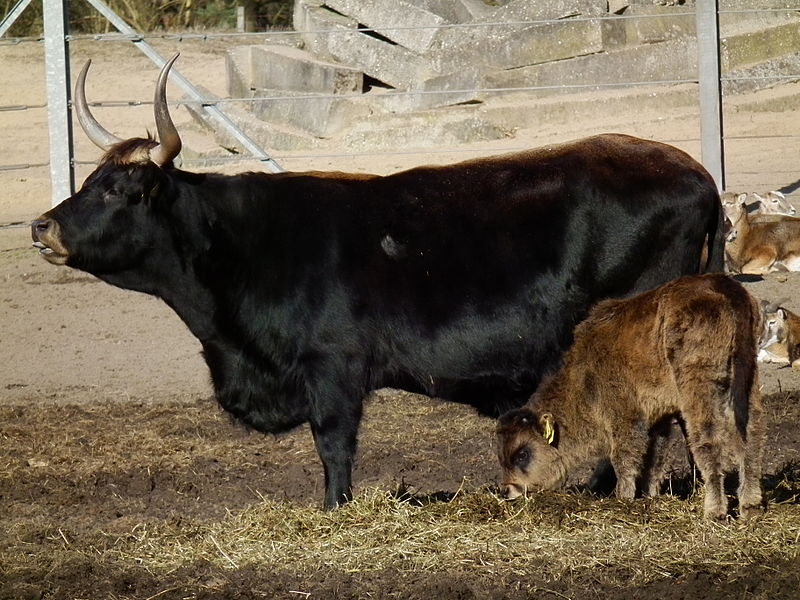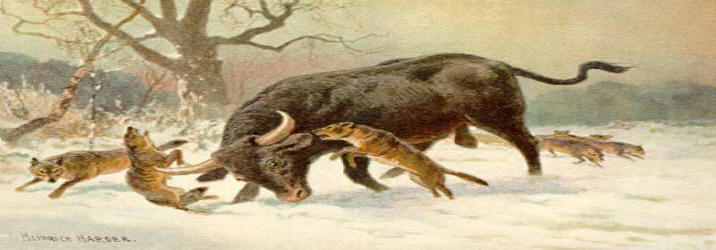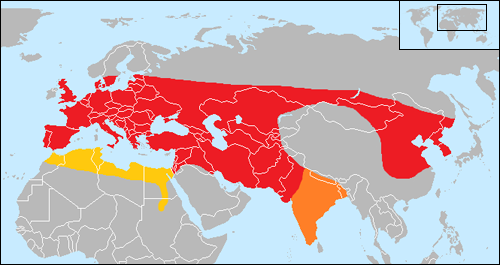History & Reproduction
Life History
Bos
primigenius, commonly known as aurochs,
are possible decendents of
Bos acutifrons
approximately two million years ago.
The species originated in India and are thought to have
spread to Europe from a southern route.
After spreading throughout Europe and current Russia, they
appeared in Spain (700,000 years ago).
Most aurochs were located in Germany, where they were first
found 275,000 years ago.
The last living populations of
Bos primigenius were
found in Poland and in 1627, the last population of wild aurochs
died (Vuure, 2003).
Humans were the main cause of extinction of the
Bos primigenius.
Aurochs were a food source for humans, and so they were a
targeted hunt. Also,
they became extinct because of cattle diseases, being hunted, the
development of farming caused a lessening of available land, climate
changes, and food competition with the domesticated cattle
(Mensvoort, 2010).
Figure 1. Known locations of Bos Primigenius according
to historical records. Image from Maas, P.H.J. (2011).
Reproduction
Aurochs participated in sexual reproduction with a bull (male) and a
cow (female). They had
internal reproduction. Reproduction occurred during a particular
period of time for the Bos
primigenius.
Typicall y, this time was in the late summer.
Calves were born in the following late spring (Maas, 2011).
Spring births were beneficial because the calves then had all summer
to be able to grow and develop before having to deal with a harsh
winter. Spring births also
allowed for the calves to be able to develop a strong immune system
to fight off diseases and infections that could occur in the winter
months (Maas, 2011). Another animal that give birth in the
spring is the Eastern Gorilla. To learn more about this organism
click
here. This type of sexual reproduction has historical
records in Poland, where head counts of the Aurochs occurred in the
early 1600s.
y, this time was in the late summer.
Calves were born in the following late spring (Maas, 2011).
Spring births were beneficial because the calves then had all summer
to be able to grow and develop before having to deal with a harsh
winter. Spring births also
allowed for the calves to be able to develop a strong immune system
to fight off diseases and infections that could occur in the winter
months (Maas, 2011). Another animal that give birth in the
spring is the Eastern Gorilla. To learn more about this organism
click
here. This type of sexual reproduction has historical
records in Poland, where head counts of the Aurochs occurred in the
early 1600s.
Now I bet you are wondering what other
organisms did the Aurochs have contact with. Well you are in luck! Follow
the link on the bottom to the interactions page to find out what
other organisms the wonderful animal had contact with. 
References

